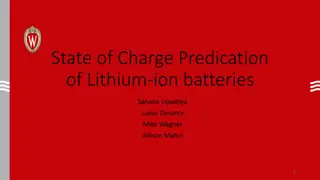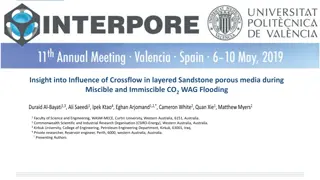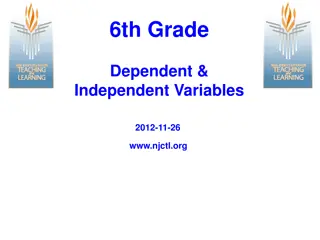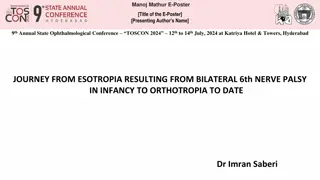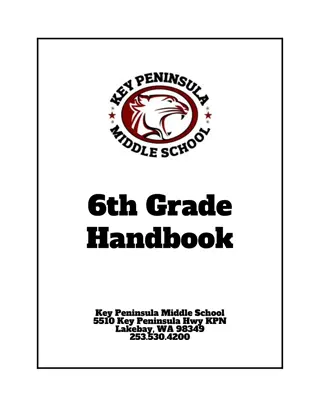
Social Studies Focus: Europe's Environmental Issues and Cultural Characteristics
Dive into key aspects of Europe's geography and culture in this Social Studies week at a glance. Explore the environmental issues such as acid rain in Germany, air pollution in the UK, and the Chernobyl disaster in Ukraine. Discover the cultural diversity of languages spoken and major religions practiced in Europe.
Download Presentation

Please find below an Image/Link to download the presentation.
The content on the website is provided AS IS for your information and personal use only. It may not be sold, licensed, or shared on other websites without obtaining consent from the author. If you encounter any issues during the download, it is possible that the publisher has removed the file from their server.
You are allowed to download the files provided on this website for personal or commercial use, subject to the condition that they are used lawfully. All files are the property of their respective owners.
The content on the website is provided AS IS for your information and personal use only. It may not be sold, licensed, or shared on other websites without obtaining consent from the author.
E N D
Presentation Transcript
Week at a Glance for Social Studies August 28- September 2
SS6G7 Locate selected features of Europe. a. Locate on a world and regional political-physical map: the Danube River, Rhine River, English Channel, Mediterranean Sea, European Plain, the Alps, Pyrenees, Ural Mountains, and Iberian Peninsula. b. Locate on a world and regional political-physical map the countries of France, Germany, Italy, Russia, Spain, Ukraine, and United Kingdom. SS6G8 Explain environmental issues in Europe. a. Explain the causes and effects of acid rain in Germany. b. Explain the causes and effects of air pollution in the United Kingdom. c. Explain the causes and effects of the nuclear disaster in Chernobyl, Ukraine. SS6G10 Describe selected cultural characteristics of Europe. a. Describe the diversity of languages spoken within Europe. b. Identify the major religions in Europe: Judaism, Christianity, and Islam.
locate on a world and regional political- physical map the countries of France, Germany, Italy, Russia, Spain, Ukraine, and United Kingdom.
Locate on a world and regional political-physical map: the Danube River, Rhine River, English Channel, Mediterranean Sea, European Plain, the Alps, Pyrenees, Ural Mountains, and Iberian Peninsula.
Acid Rain Acid Rain In Germany Video When it comes to the problem of acid rain, Germany is its own worst enemy. The main sources of acid rain are smoke from factories and cars. Factories burn fossil fuels like natural gas, coal, and oil. Cars and buses that burn gasoline and diesel produce these gases too. Germans also own more cars than most people do in other counties. This adds to acid rain through auto emissions. SS6G8 Explain environmental issues in Europe. a. Explain the causes and effects of acid rain in Germany. b. Explain the causes and effects of air pollution in the United Kingdom. c. Explain the causes and effects of the nuclear disaster in Chernobyl, Ukraine.
Air pollution in the UK is a major cause of diseases such as asthma, lung disease, stroke, cancer, and heart disease, and is estimated to cause forty thousand premature deaths each year, which is about 8.3% of deaths, while costing around 40 billion each year On 26 April 1986, the Number Four reactor at the Chornobyl Nuclear Power Plant in what then was the Soviet Union during improper testing at low- power, resulted in loss of control that led to an explosion and fire that demolished the reactor building and released large amounts of radiation into the atmosphere. As safety measures were ignored, the uranium fuel in the reactor overheated and melted through the protective barriers. SS6G8 Explain environmental issues in Europe. a. Explain the causes and effects of acid rain in Germany. b. Explain the causes and effects of air pollution in the United Kingdom. c. Explain the causes and effects of the nuclear disaster in Chernobyl, Ukraine.
Monday, August 29 Standard: SS6G7 Locate selected features of Europe. SS6G8 Explain environmental issues in Europe. Learning Target: I can locate select features of Europe and describe three major environmental issues in Europe. Warm-up: Video: 17 Beautiful Countries of Europe Work Session: Direct Instruction; students will take notes and view maps of Europe; Brain Wrinkle. Introduce study guide maps, and Textbook Chapter 4. Closing: Think-pair- Share Reminders: Quiz on Friday, No School 9/6 Canvass Course
Tuesday, August 30 Standard: SS6G7 Locate selected features of Europe. SS6G8 Explain environmental issues in Europe. Learning Target: I can locate select features of Europe and describe three major environmental issues in Europe. Warm-up: Video: 17 Beautiful Countries of Europe Work Session: Direct Instruction; students will take notes and view maps of Europe; Brain Wrinkle. Introduce study guide maps, and Textbook Chapter 4. Closing: Ticket out Door Reminders: Quiz on Friday, No School 9/6 Canvass Course
Wednesday, August 31 Standard: SS6G8 Explain environmental issues in Europe. a. Explain the causes and effects of acid rain in Germany. b. Explain the causes and effects of air pollution in the United Kingdom. c. Explain the causes and effects of the nuclear disaster in Chernobyl, Ukraine. Learning Target: SWBAT discuss the causes and problems caused by acid rain, air pollution, and nuclear disasters Warm-up: Board Game Work Session: Textbook Chapter 4; Brain Wrinkles, Videos; Closing: Think-pair- Share Reminders: Quiz on Friday, No School 9/6 Canvass Course
Thursday, September 1 Standard: SS6G10 Describe selected cultural characteristics of Europe. a. Describe the diversity of languages spoken within Europe. b. Identify the major religions in Europe: Judaism, Christianity, and Islam. Learning Target: SWBAT Identify and briefly describe the three major religions and languages in Europe. Warm-up: Introduce Powerpoint Study Guide Europe Work Session: Powerpoint Study Guide Europe Closing: Students Summarize main point from all standards Reminders: Quiz on Friday No School 9/6 Canvass Course
Friday, September 2 Standard: SS6G7,8,10 Europe. Learning Target: I can locate seven countries, and ten physical features. I can describe major environmental issues in three countries. I can describe the three major religions of Europe Warm-up: Map Skills practice with partner Work Session: Make a Virtual Field Trip for SSG7, G8, G10; small group activity, class discussion and research, Quiz Closing: Think-pair- Share Reminders: Quiz on Friday
Resources for Unit 1: Europe Countries of Europe Physical Geography of Europe Part 1- Landforms and Waterways 17 Most Beautiful Countries in Europe Travel Video
Social Studies Standards SS6H3 Explain conflict and change in Europe. a. Describe the aftermath of World War I: the rise of communism, the Treaty of Versailles, the rise of Nazism, and worldwide depression. SS6G7 Locate selected features of Europe. a. Locate on a world and regional political-physical map: the Danube River, Rhine River, English Channel, Mediterranean Sea, European Plain, the Alps, Pyrenees, Ural Mountains, and Iberian Peninsula. b. Locate on a world and regional political-physical map the countries of France, Germany, Italy, Russia, Spain, Ukraine, and United Kingdom. SS6G8 Explain environmental issues in Europe. a. Explain the causes and effects of acid rain in Germany. b. Explain the causes and effects of air pollution in the United Kingdom. c. Explain the causes and effects of the nuclear disaster in Chernobyl, Ukraine. SS6G9 Explain the impact of location, climate, natural resources, and population distribution on Europe. a. Compare how the location, climate, and natural resources of Germany, the United Kingdom and Russia impact trade and affect where people live. SS6G10 Describe selected cultural characteristics of Europe. a. Describe the diversity of languages spoken within Europe. b. Identify the major religions in Europe: Judaism, Christianity, and Islam. SS6CG3 Compare and contrast various forms of government. a. Explain citizen participation in autocratic and democratic governments. [i.e., role of citizens in choosing the leaders of the United Kingdom (parliamentary democracy), Germany (parliamentary democracy), and Russia (presidential democracy)]. b. Describe the two predominant forms of democratic governments: parliamentary and presidential. SS6E7 Analyze different economic systems. a. Compare how traditional, command, and market economies answer the economic questions of 1-what to produce, 2-how to produce, and 3-for whom to produce. b. Explain that countries have a mixed economic system located on a continuum between pure market and pure command. c. Compare the basic types of economic systems found in the United Kingdom, Germany, and Russia.
SS6E8 Analyze the benefits of and barriers to voluntary trade in Europe. a. Explain how specialization encourages trade between countries. b. Compare and contrast different types of trade barriers such as tariffs, quotas, and embargoes. c. Explain why international trade requires a system for exchanging currencies between nations. d. Describe the purpose of the European Union and the relationship between member nations. SS6E9 Describe factors that influence economic growth and examine their presence or absence in the United Kingdom, Germany, and Russia. a. Evaluate how literacy rates affect the standard of living. b. Explain the relationship between investment in human capital goods (education and training) and gross domestic product (GDP per capita). c. Explain the relationship between investment in capital (factories, machinery, and technology) and gross domestic product (GDP per capita). d. Describe the role of natural resources in a country s economy. e. Describe the role of entrepreneurship.



